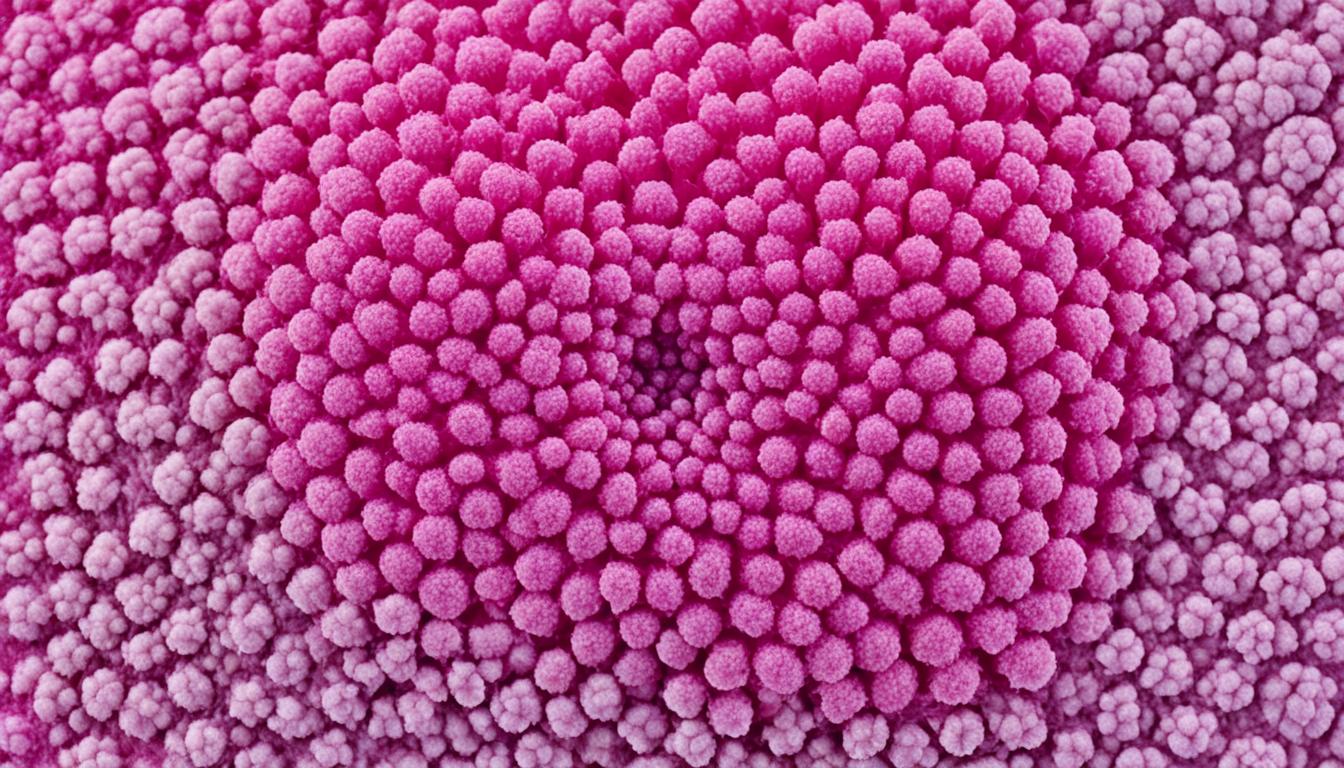Condylomata acuminata, also called genital warts, is an infection passed through sex. It’s caused by the human papillomavirus (HPV). This disease shows up with wart-like growths in areas like the genitals, anus, and nearby skin.
It spreads through sexual contact, which includes vaginal, anal, or oral sex. Genital warts are linked to HPV types 6 and 11. They can be uncomfortable and painful. Plus, they might raise the risk of certain cancers.
Doctors can often spot genital warts by looking. But, sometimes, they need extra tests like a biopsy or HPV test to be sure.
Topical treatments, freezing, surgery, or laser removal can help get rid of genital warts. And lately, stem cell therapy has offered new promise in treating this condition.
Key Takeaways:
- Condylomata acuminata, or genital warts, is an STI from HPV.
- It can cause discomfort, itchiness, and possibly increase cancer risk.
- Diagnosis often involves a simple visual check, but sometimes extra tests are needed.
- Treatments vary from topical applications to surgical methods and include stem cell therapy.
- Stem cell therapy is a new treatment approach that shows potential, but it still needs more study.
Causes and Risk Factors of Condylomata Acuminata
The main cause of Condylomata acuminata, or genital warts, is infection with HPV. It specifically comes from HPV types 6 and 11. HPV spreads through sexual contact, like vaginal, anal, or oral sex.
Some things can make getting genital warts more likely. These include:
- Starting sexual activities early
- Having many sexual partners
- Not using protection during sex
- Having a weak immune system due to certain medications or HIV
Not everyone who gets HPV will get genital warts. Sometimes, the HPV infection doesn’t show any signs. But, those with HPV, even if they don’t have warts, can still give the virus to others during sex.
Understanding the causes and risks can help people protect their sexual health. They can do this by:
- Having safe sex
- Getting the HPV vaccine
- Getting checked regularly
These steps reduce the chances of getting genital warts or spreading the virus further.
Key Takeaways:
– HPV types 6 and 11 are the main causes of Condylomata acuminata.
– Doing things like starting sex early and not using protection increases the risk of getting genital warts.
– HPV can stay hidden but still be spread by those infected.
– Protecting yourself with safe sex, vaccines, and check-ups is key to prevention.
Diagnosis and Treatment of Condylomata Acuminata
Diagnosing genital warts often just needs a look from a healthcare provider. Sometimes, more tests are needed to be sure or check for HPV. A biopsy takes a tiny piece from the warts to look under a microscope. HPV testing can also be done to find HPV DNA.
Treating genital warts aims to remove the warts and lower the chance of spreading. Creams or solutions are often used directly on the warts. Cryotherapy involves freezing them off with liquid nitrogen. Warts can also be surgically removed or destroyed using a laser.
Stem cell therapy is a new possible way to treat genital warts. This method uses the healing powers of stem cells for the skin. More study is needed to know how safe and well it works.
Even if the warts go away with treatment, the HPV infection stays. This means warts might come back. People with genital warts need to keep having check-ups and tests. This helps manage the condition.

